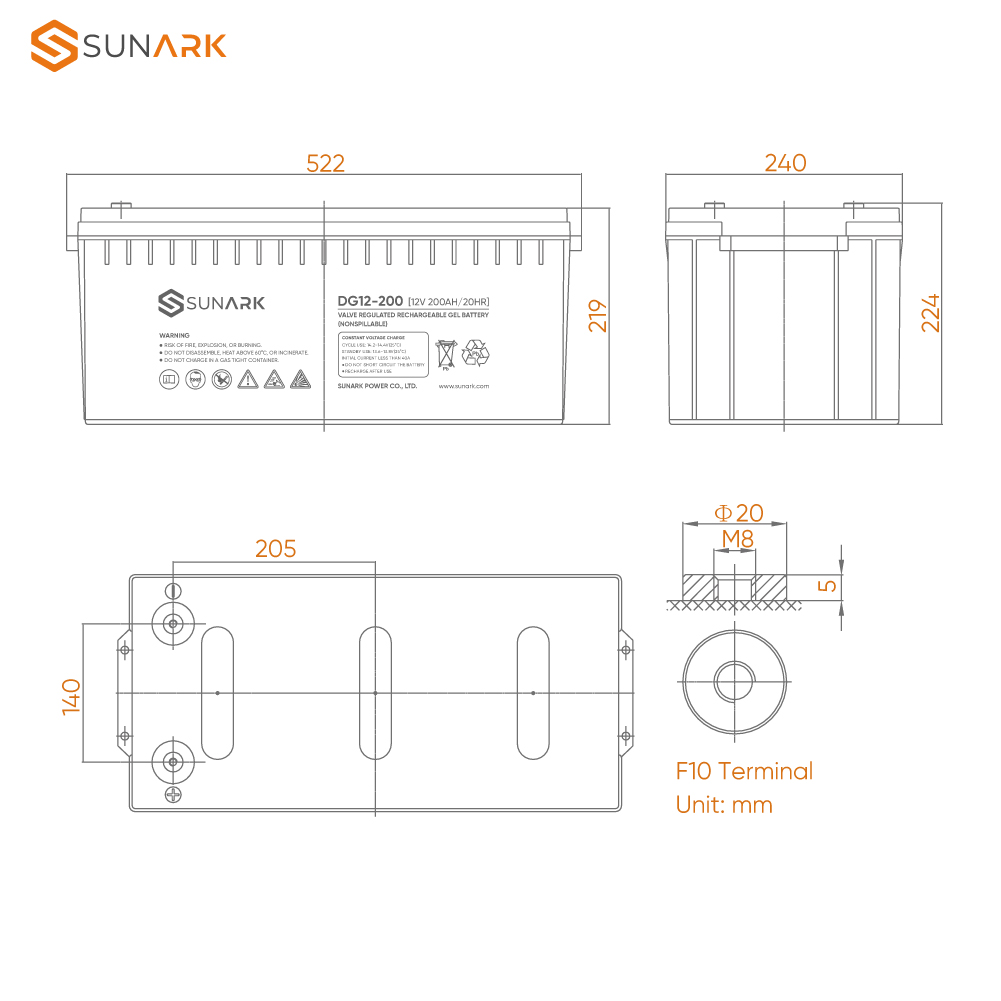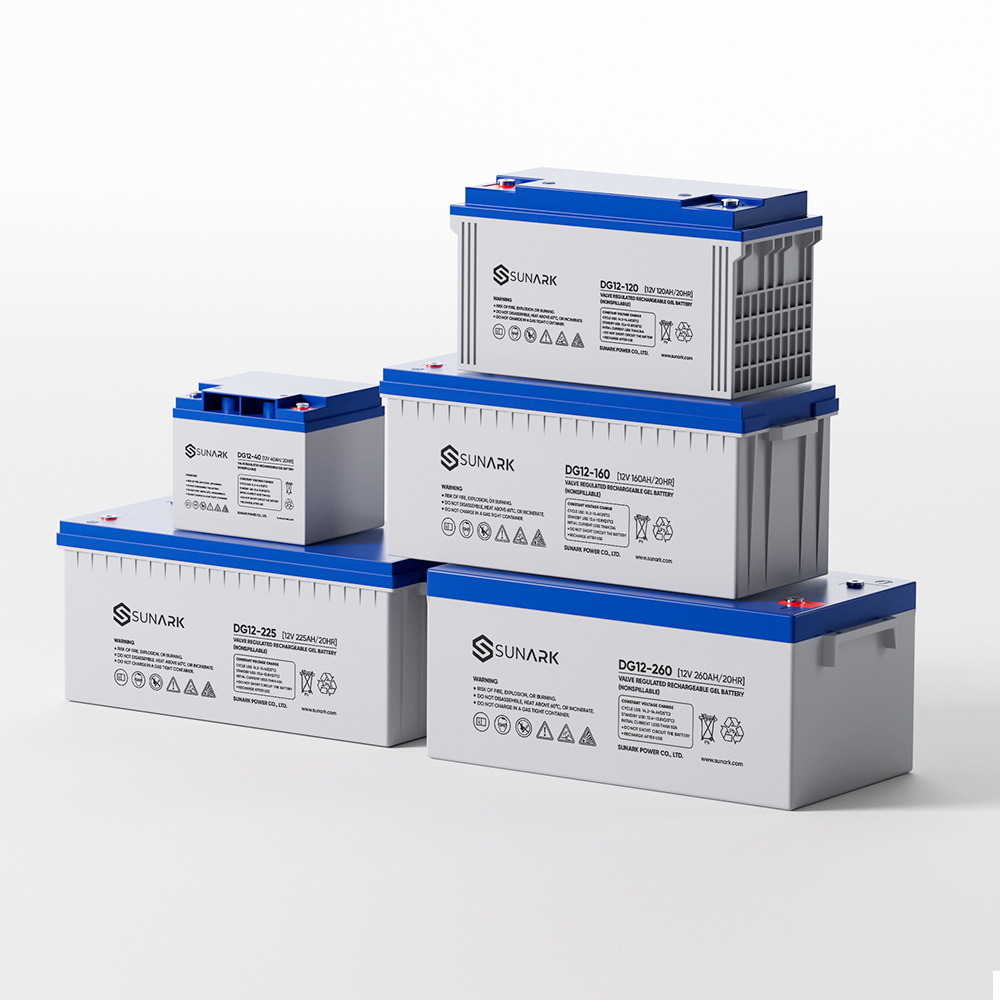Brand:
SunArkCells Per Unit:
6Voltage Per Unit:
12VDesign Life:
20 years (Float charging)Standby Use Voltage:
13.6V~13.8V @25°CCycle Use Voltage:
14.2V~14.4V @25°COperating Temperature Range:
Discharge: -15°C~50°C Charge: 0°C~40°C Storage: -15°C~50°CNormal Operating Temperature Range:
25°C ± 5°CSelf Discharge:
Monthly Self-discharge ratio is less than 3.5% at 25°C.Container Material:
A.B.S. UL94-HB UL94-V0 Optional
C Rate Of 12V 200AH GEL Battery

Working Temperature Of Battery ?
The operating temperature range of the battery refers to the temperature range in which the battery can work normally with good performance. Different types of batteries have different operating temperature ranges, but in general, a suitable operating temperature range can improve the performance and life of the battery.Typical operating temperatures for lead-acid batteries range from -20°C to 50°C. At lower temperatures, the available capacity of the battery may decrease, while at higher temperatures, the self-discharge rate and life of the battery may increase. When using the battery, try to control its operating temperature within an appropriate range and avoid Batteries are overheated or undercooled to improve battery performance, safety and longevity. If you need to use the battery in an extreme temperature environment, you should choose a battery type that is specially designed and suitable for this temperature range to ensure its normal operation and reliability. At the same time, the use and storage temperature recommendations provided by the battery manufacturer should be followed to maximize the protection of battery performance and life.

DOD Of Gel Battery:
Depth of Discharge (DoD for short) refers to the ratio of the battery from fully charged to discharged to a specific level of charge. It is used to measure the ratio between the actual capacity of the battery and the total capacity, reflecting how much energy the battery releases during use. Usually expressed as a percentage.
For deep-cycle batteries (such as lead-acid batteries), it is generally recommended to control the depth of discharge between 20% and 80% to balance the trade-off between usable capacity and cycle life. Depth of discharge exceeding 80% may significantly reduce the cycle life of the battery. However, in some specific applications, a greater depth of discharge may be required, such as deep discharge applications in solar systems, where the depth of discharge can reach 50% or deeper.